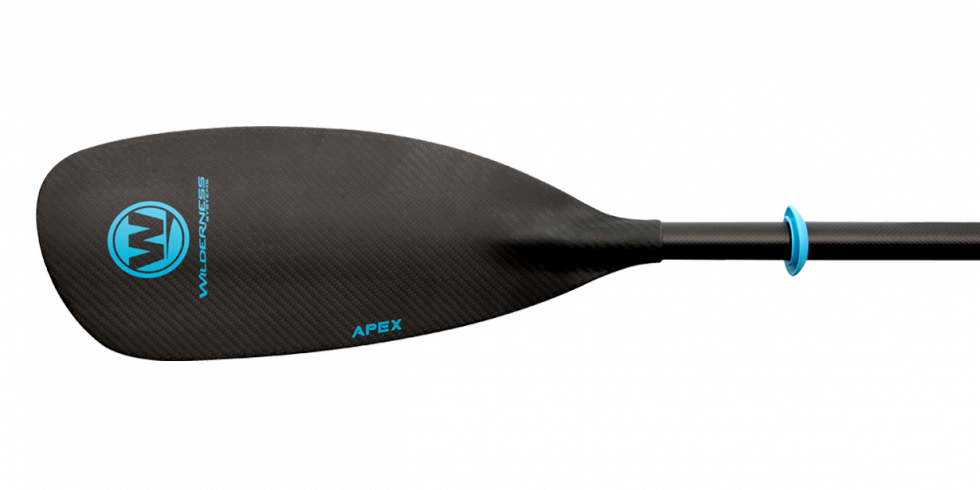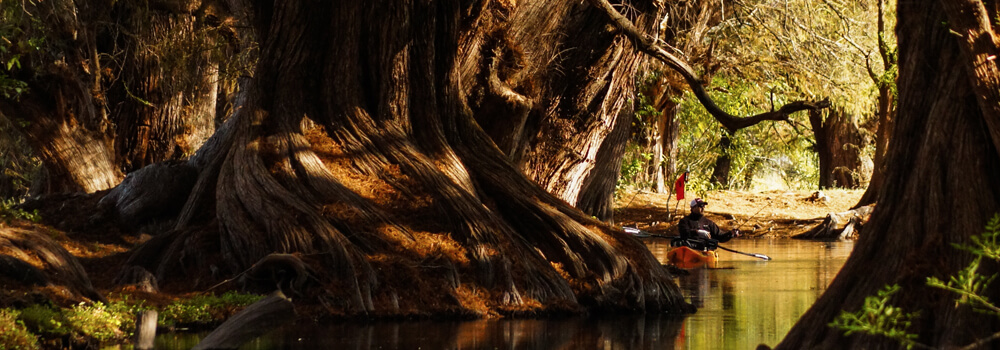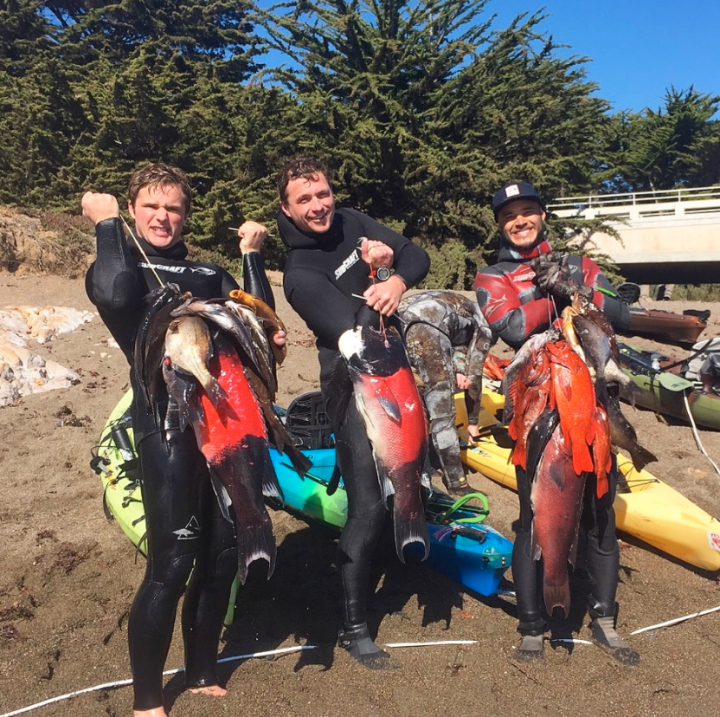
Apex Carbon (2 Sizes)
The Apex Rec/Touring Carbon paddle weights just 27 oz and is the lightest option in the Apex series.
Learn More
The Apex Rec/Touring Carbon paddle weights just 27 oz and is the lightest option in the Apex series.
Learn MoreJoin the Wilderness Systems Email Community
Be the first to know about new products, team news and events.



I now live in California and about 90% of the spearfishing I do here is off my Tarpon 160.
Spearfishing from a Kayak
By: Kris Cortez
If you're a spearo, then you know that sometimes the best reefs are pretty far out and are usually past shore dive range. With a kayak, you are able to get to these “secret” spots faster and safer.
I grew up in Hawaii on the island of Kauai and I started spearfishing when I was 6 years old. As I got better I wanted to venture further out and my dad bought me my first kayak when I was 11 years old. To get to some of the good reefs and drop offs on Kauai , you definitely need a kayak or a boat. I now live in California and about 90% of the spearfishing I do here is off my Tarpon 160.
I don’t like taking a lot of gear when I go out diving, just what I need. If conditions are clear and calm, then 8-10 hour days on the water are pretty common. Another reason why I love kayak diving is WHEN I get cold, it’s definitely not an “if” here in Northern California , then I can just jump back on the kayak and warm up. I like bringing a Hydroflask filled with hot tea for those extra cold water days. As for gear, I make sure everything is secured to the kayak with carabiners or in the hatches during launching and landing. In my opinion even if there is a slight chance of flipping over, SECURE YOUR GEAR! I flipped my kayak on a tiny 1 foot wave and lost my weight belt, knife, and dive light. That’s $200 sacrificed to the ocean gods, not worth it! So besides your basic gear, I also like to bring food and water especially if I know it’s going to be a full day of diving or a competition. Some divers can’t eat while diving but as for me, taking in calories and the process of digestion helps to keep me warm, so a couple of protein bars and an apple is a perfect lunch for an all day dive. Hydrating is also very important while spearfishing so you don’t get dehydrated and you keep your ears and sinuses lubricated. When you're dehydrated, equalization can become tough because your eustachian tubes can get sticky and make it harder to equalize, so bring plenty of water.
I also always carry my CA fishing license, my phone, and my keys with me on my kayak. I keep all of this in or attached to a bright orange nalgene bottle so it’s easy to find and it floats! Another safety item that I carry especially here in California is a tourniquet, and I’m glad to see that more and more divers here in California are carrying these. As everyone knows there are Great Whites here and it’s always better to be safe than sorry. I also keep my VHF radio attached to my seat and secured with a carabiner. Before launching I like to let everyone in the group know where everything is on my kayak just incase something does happen.
Spearfishing is my passion and I enjoy sharing it with others and getting people into it. I often take new people out and it’s sometimes their first time on a kayak or they have only paddled a kayak once or twice. Throughout the day, the weather can change, for example the winds or currents may get stronger or change direction. New divers may also get sea sick and may not be able to handle a long paddle while sick. For this reason I like to keep a simple bungee, one end attached to the stern handle of my kayak and the other end attached to my mid handle by a large carabiner. If that person needs a tow, I can paddle right up to his or her kayak and clip on to the bow handle of they’re kayak. From there I can help them paddle in or I can even paddle for them if they are really in trouble. I like to use a bungee instead of a rope because the bungee gives and won’t jerk with the waves like a static rope would.
As spearos and fishermen and fisherwomen, we carry sharp objects on our kayaks like hooks, knives, gaffs, spearguns, polespears, and more. Always make sure you have some kind of end cap on the tip of your shaft. They have all kinds of fancy end caps out there but the most effective and cheapest is just a piece of old speargun rubber about an inch or two long which will fit nice and snug on the tip of your gun. You want to make sure guns are capped and any extra guns stored on your kayak be pointed away from your seat. I’ve seen divers rip their wetsuit or even worse get stabbed in their thigh by their gun while jumping back onto their kayak. So just be safe and always use common sense!
The last thing I want to talk about is having a dive flag. Even though a bright kayak should be highly visible to any boater, it’s still pretty low profile especially in choppy water and can be easily missed by a careless captain. Having a dive flag will let boaters see you from a farther distance and will also let them know that there are divers down and to avoid the area.
Remember never stop trying to learn new techniques and it’s always a good idea to run some safety scenarios in your head. If this happens, am I prepared to handle the situation? WIll it be efficient? Ask questions, look for mentors, read blogs and forums, watch Youtube videos, and most important of all, just get out there and have fun and be safe! Aloha!